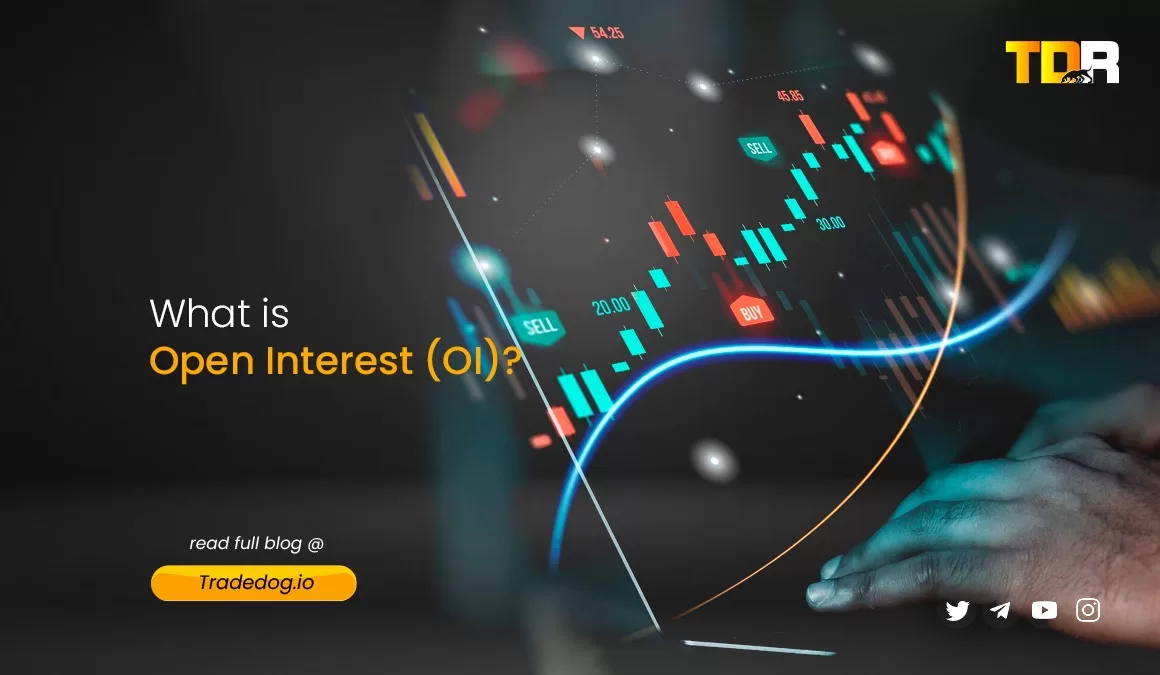Quick Links
In the fast-paced world of cryptocurrency trading, understanding key metrics like open interest can make a significant difference in making informed decisions. Whether you are a seasoned trader or just stepping into crypto trading, understanding the concept of open interest is essential for tackling the volatile markets effectively.
What is Open Interest?
Open interest (OI) is a metric that tracks the total number of outstanding derivative contracts, such as Bitcoin Perpetual Futures or Ethereum call or put options, that have not been settled or closed. It represents the total number of active positions in a specific contract, indicating the level of market activity and trader participation. Essentially, open interest tracks the total number of contracts that are currently held by traders, providing insights into market sentiment and potential future price movements. Traders often analyze open interest alongside other indicators to assess the strength of a price trend and make informed trading decisions.
The graph shows how much money has been tied up in Bitcoin futures contracts on different exchanges since May 2021. The total amount represented by lines has generally been going down, suggesting fewer people are using futures to bet on Bitcoin’s price. There were some bumps in September 2021, March 2022, and November 2023. It’s important to consider other factors too, but this graph gives a good idea of how active the Bitcoin futures market is.
Let’s understand it better with a scenario involving Litecoin futures:
Imagine the open interest for Litecoin futures contracts stands at 12. A trader named Emily decides to enter the market and purchases 20 contracts, elevating the open interest to 32. Subsequently, another trader, Alex, opts to close 8 of their existing contracts. This action reduces the open interest to 24. However, concurrently, Emily buys an additional 10 contracts, resulting in a 10-unit increase in open interest, bringing it to 34.
In this case, the closing of positions by Alex leads to a decrease in open interest, while Emily’s purchase of additional contracts contributes to its rise. This illustrates the dynamic nature of open interest in response to trading activity.
As seen in the earlier example, traders and analysts in futures trading often use open interest as a crucial metric to gauge the strength of price trends. An uptick in open interest indicates heightened market participation and helps confirm the existing trend, whereas a decline may signal a possible reversal or weakening of the trend.
Importance of Open Interest
Open interest serves as a valuable tool for traders and analysts in several ways:
1. Market Sentiment: High open interest indicates increased activity and interest in a particular contract, suggesting higher liquidity and potential price volatility. Conversely, low open interest may signal waning market sentiment or reduced trading activity.
2. Price Trend Confirmation: Changes in open interest often accompany shifts in price trends. Rising open interest, accompanied by price increases, can confirm the strength of an ongoing trend, while declining open interest may indicate a potential trend reversal.
3. Liquidity Assessment: By gauging open interest, traders can assess the liquidity of a market. Higher open interest implies more market participants, making it easier to enter or exit positions without significantly impacting prices.
4. Market Tops and Bottoms: Open interest can help traders identify potential market tops and bottoms when used in conjunction with other technical indicators. Peaks in open interest may coincide with market peaks, signaling a possible reversal in price trends.
Open Interest vs Trading Volume
While both open interest and trading volume provide valuable insights into market activity, they serve distinct purposes:
Trading Volume: Measures the total number of contracts traded within a specific period, reflecting the immediacy and liquidity of the market.
Open Interest: Tracks the total number of outstanding contracts that have not been closed or settled, indicating the level of ongoing market participation and interest.
Limitations of Open Interest
Despite its significance, open interest has its limitations:
1. Difficulty in Interpretation: Interpreting changes in open interest can be challenging, as it does not distinguish between new positions and position closures. Sudden fluctuations in open interest may not always reflect significant market developments.
2. Volatility Impact: In highly volatile markets, open interest may fluctuate rapidly, making it challenging to discern meaningful trends or patterns.
3. Incomplete Market Picture: Open interest may not provide a comprehensive view of market dynamics, especially in the absence of data on institutional positions or large traders.
Closing Thoughts
In the dynamic world of crypto trading, open interest plays an important role in understanding market sentiment and potential price trends. By analyzing changes in open interest alongside other indicators, traders can gain insights into market dynamics and make more informed trading decisions. As with any metric, it’s essential to consider open interest within the broader context of market analysis and combine it with other technical indicators for a comprehensive understanding of market conditions. By leveraging the power of open interest, traders can navigate the complex crypto landscape with greater confidence and precision.









